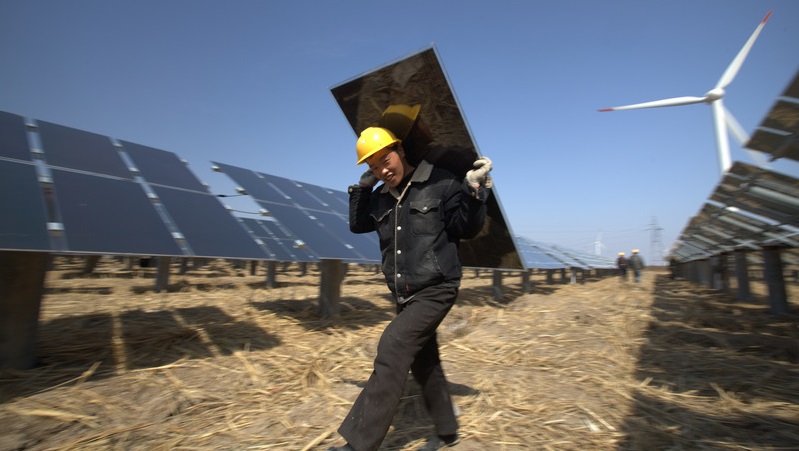In recent years, China has installed a mind-blowing number of solar farms and hookied them up to big cities with giant electricity transmission lines. But there’s more to an energy transition than just that.
Just this year, China will install much more solar than it was doing just a few years ago and more, in one year, than the US has installed in its history. The growth in capacity will be huge.
But the percentage of China’s electricity which is generated by wind and solar is still expected to grow slowly, by less than 1% a year between 2023 and 2030.
How does exponential growth in new solar lead to just 1% growth in the amount of solar used? Because longstanding issues in China’s power market curtail the impact that new solar or wind power can have.
Dreaming big on climate action means finding the money to pay for it
Issues include the electricity market and grid’s inability to transfer power between regions even on grids already linked up physically, the under-developed price mechanism for renewable energy, and little support for energy storage.
These issues require policy attention first and foremost, highlighting the ways that the world’s largest energy transition needs more than buckets of hardware. And why continued focus on coal power for “energy security” leads policymakers to overlook fundamental items on the energy transition checklist.
China has not lacked the capacity to generate electricity for years but, even with an overcapacity of coal plants, high-growth regions have struggled to meet growing energy demand.
That isn’t because there isn’t enough power, but because China’s power system isn’t able to deliver it.
World Bank to suspend debt repayments for disaster-hit countries
For example, even if they’re linked by transmission cables, transferring power from a province which generates a lot of electricity to a neighbouring province which uses a lot of electricity isn’t possible without clear policy guidance for the electricity market.
Despite an overcapacity of coal plants, an outdated grid with restrictive, inflexible policies that limit regional electricity grids from performing basic electricity transfers can mean that one province sits on wasted power supply while its neighbor’s lights go out.
This hampers coal’s ability to provide electricity across China. Instead of fixing these issues though, authorities are just building more coal power plants.
If they are not resolved, these issues could derail wind and solar’s ability to deliver the world’s biggest energy transition.
Rich nations pledge $2.7 billion for Senegal’s renewable rollout
You can install all the solar panels and wind turbines you want. Unless there’s the policy and infrastructure to support them to meet electricity demand, then the the inefficiencies inheritied over from a coal-reliant power system could choke the development of renewables.
One solution is energy storage – things like batteries. But, even for a technology with as much investment appeal as this, basic policy support is necessary.
China’s electricity grid has for decades prioritised fossil fuel energy sources and the factors of this preferential treatment for fossil fuel continue today.
One major factor that blocks the application of energy storage is the power grid’s preferential sourcing of electricity from large-scale power plants, such as a typical coal plant, so there is a unidirectional transmission of electricity from a major hub to a number of end points – the electricity users.
Fossil fuels, planes, ships and shares – What will be taxed for climate funds?
The alternative is that the grid would select a number of smaller power sources which can more efficiently switch on and off of supplying electricity, and coordinate a multidirectional flow of electricity among multiple sources and multiple endpoints.
It is only under this second scenario – which energy planners have projected as China’s future of renewable energy use – that energy storage has a real application.
As coal plants cannot efficiently turn on and off, and China’s grid responds to this by keeping them on, energy storage remains sidelined despite its future role as a key player.
While China’s renewables generate a lot less electricity than they could do if used properly, the opposite is true for coal.
Carbon credits touted as saviour of coal-to-clean energy deals
While the percentage of renewable energy in China’s energy mix is increasing, actual use of those new energy sources remains low.
In the end, renewables generate a loss less electricity in China than they could.
The opposite is true for coal which continues to get preferential status from China’s energy systems.
And China’s most recent energy roadmap has projected that coal use will continue to grow at a “reasonable speed” into 2030.
This continued growth risks locking China out of a renewable energy transition, and mountains of unused solar panels alone won’t be able to unlock it.
At Greenpeace East Asia’s Beijing office, Gao Yuhe is a project leader and August Rick is an international communications officer
